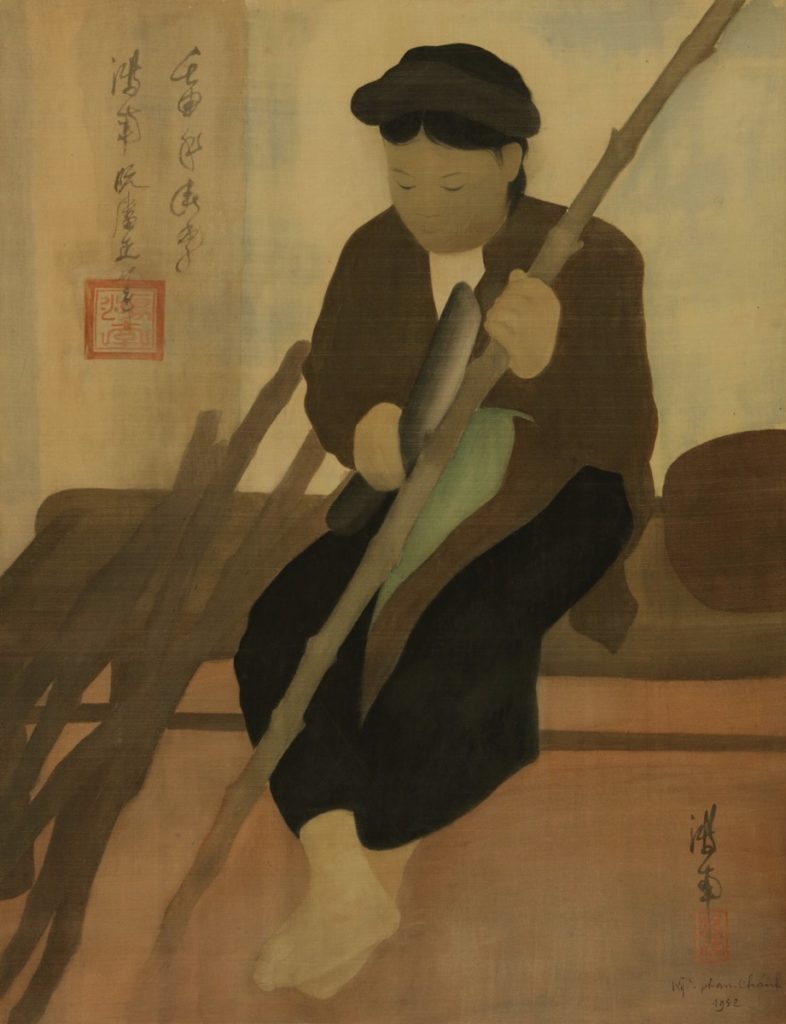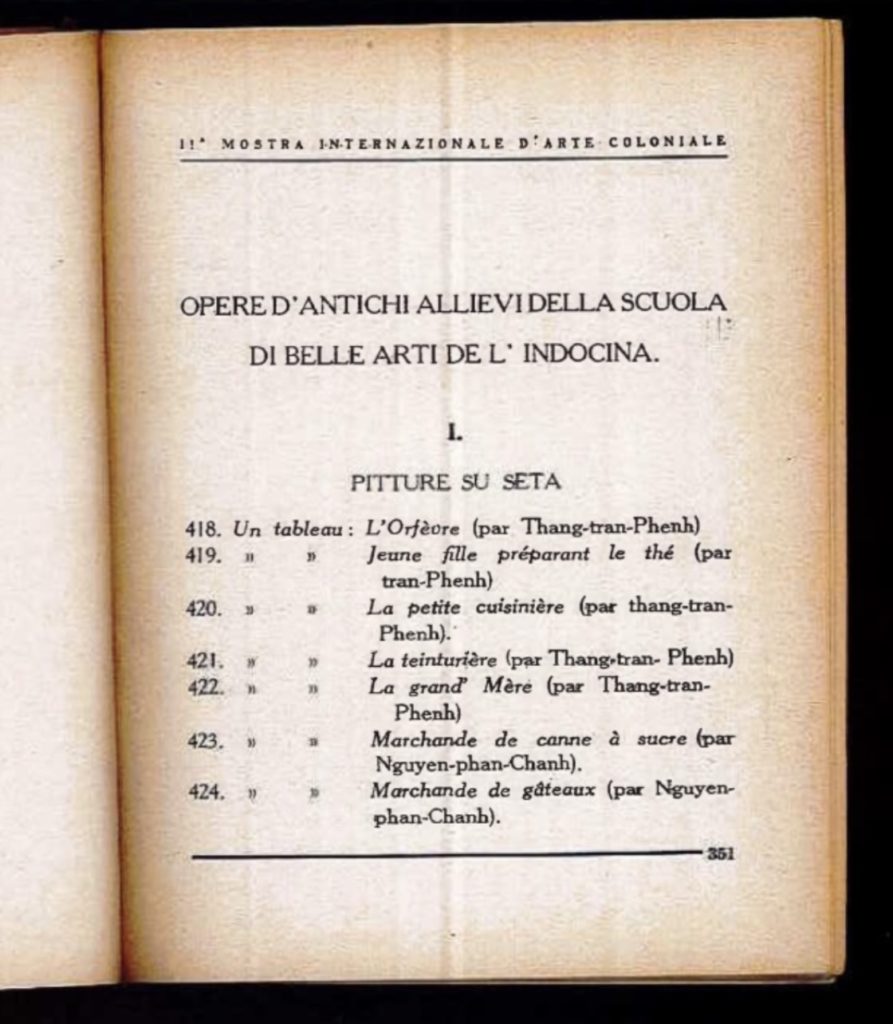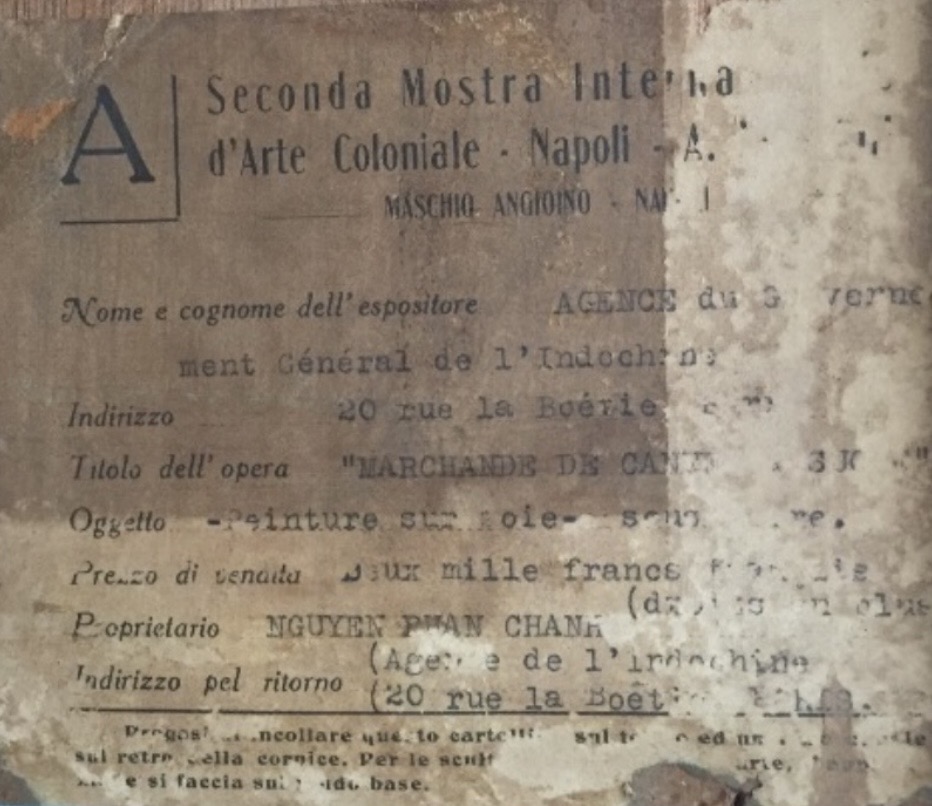Nguyen Phan Chang, 1932, « The Sugar Cane Merchant », or the serenity of the truth
Our painting is part of the artist’s exceptional period of creation from 1929 to the year 1933.
In 1932, Nguyen Phan Chanh was an artist already recognised for his talent.
The previous year, at the International Colonial Exhibition in Paris, the entire Indochina School of Fine Arts, under the aegis of its founder, Victor Tardieu, attracted a large, multiform audience, not only French but international. The Vietnamese artistic approach was identified. Moreover, a new quality of collectors, far from the usual circles of Hanoi, emerged. In the Paris of the 1930s, where all that counts on the world artistic level is expressed (artists, schools of thought, museums, galleries, magazines, etc.), the performance was impressive. A polite and distant response was to be expected, the art on offer being abundant, scrutinized, judged.

But no, the interest was there and the press was not mistaken.
“L’Illustration”, one of the world largest media, in a sumptuous special issue for Christmas 1932, devoted a laudatory article – written by Jean Tardieu, Victor’s son – to Vietnamese painting. The works on silk of Nguyen Phan Chanh hold the star since the 4 works illustrating the article are all silks of the painter, the newspaper also informs us about the happy collectors-owners. Thus are illustrated “The Witch” belonging to Pierre Massé, “The Young Girl Washing Vegetables” by Dr. Montel, “The Child with a Bird” by Dr. Morax. Massé is a high level scientist, Morax, friend of Alexandre Yersin, a great ophthalmologist, Montel a great leprosy specialist and a benefactor. These were erudite, altruistic individuals, enthusiastic about Nguyen Phan Chanh’s subtlety and who took over from the senior resident of Tonkin, Auguste Tholance, and his wife Guglielma, the painter’s first admirers in Hanoi.
Yes, in 1932, Nguyen Phan Chanh was a recognized artist by high-level collectors.
He also successfully passed the hurdle of very demanding Parisian critics. But nothing is harder than confirming. The painter who paints slowly, must provide another masterpiece, “The Sugar Cane Merchant”.
The work is particularly well documented. It appears in the catalog (Cataloge I Pitture su seta n 423) of the Colonial Exhibition of Naples, where the AGINDO (“Agence économique de l’Indochine”), which included it in its continued promotion of Vietnamese.

On the back, on a label, are written the place, the title but also the selling price. Collectors and investors will appreciate: 1500 French francs of 1934 (about 1500 euros of today…)

The work shows the painter’s classical characteristics but, also, brings important novelties.
Of course, Nguyen Phan Chanh, with his superb handwriting, continued to date and sign and to affix his seal in Chinese: at the top left, from left to right, the first vertical line informs us of the year of the monkey, the second vertical line reads from top to bottom “Hong Nan” and “Nguyen Phan Chanh”. But at the bottom right if “Hong Nan”, in script and seal are still in Chinese the painter – and this is a novelty – also signs in quốc ngữ (not only in Roman letters as shown by the presence of diacritical marks) and dates “1932”. This must be seen as a desire to better inform a non-Chinese audience.
The classic montage is preserved with the large rectangle at the top of the painted work opposite the small rectangle at the bottom, but the artist Pierre Le Tan (Le Pho’s son) had chosen to replace the dark aspect of the Japanese lacquer of the traditional Gadin frame with a gold paint that illuminates the painting by diffraction.
Nguyen Phan Chanh retains his traditional geometric construction of line/triangle/round/sphere. But the work abounds in lines (the sugar canes that streak the space) with more verticality (the lower limbs are well shown) which contrasts with the horizontality. Fewer circles with, alone, the spherical box. The large rectangle of the table runs through the work. The triangle of ink blacks (headdress and pants) is narrow. It is doubled by a triangle of flesh (face, hands and feet), inverted point.
The traditional cameo of brown is very successful, all in waves. The purity as a manifesto.
Humility and strength.
Nguyen Phan Chanh goes to the essential: a character, a gesture, a writing. The glance is put on the gesture, worthy and beautiful. The concentration is worth action.
The beauty of a gesture not a posture.
We are reminded here that Nguyen Phan Chanh is not just a painter and a poet, but also an ethnologist. The “là dong”, this large sheet of paper is used as a practical tool by the merchant to protect her from possible projections from the cut.
The artist was then 40 years old, he knew well that the world he did not choose is also a world that did not choose him.
In this sumptuous work, Nguyen Phan Chanh convinces us that if there is an epicureanism of simplicity, there is also a serenity of truth.
Jean-François Hubert